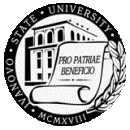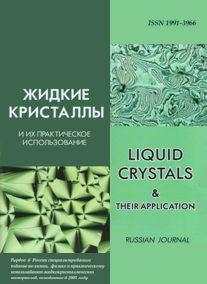|

|
Liquid Crystals and their Application
Russian Journal Zhidkie kristally i ikh prakticheskoe ispol'zovanie Жидкие кристаллы и их практическое использование |

|
|

|

|
|
|
Menu

|
|
|
|
|
Zhidk. krist. ikh prakt. ispol'z. = Liq. Cryst. and their Appl., 2021, 21 (1), 44—49.
DOI: 10.18083/LCAppl.2021.1.44 |

|
|
Correlation Between Concentration of Injected Nanoparticles and Surface Relief of Organic Matrices: a Promising Method for Liquid Crystal Molecules Orientation
|
N. V. Kamanina1,2,3, A. S. Toikka2,3, S. V. Likhomanova1,3,
Yu. A. Zubtsova1,3, L. S. Lomova2,3, P. V. Kuzhakov1,3
|
Author affiliations
1Lab for Photophysics of media with nanoobjects at Vavilov State Optical Institute,
5 Kadetskaya Liniya V.O., korpus 2, St.- Petersburg, 199053, Russia
E-mail: nvkamanina@mail.ru
2Saint-Petersburg Electrotechnical University (“LETI”),
5 Prof. Popova St., Saint-Petersburg, 197376, Russia
3SRC «Kurchatov Institute» – Petersburg Institute of Nuclear Physics,
1 Orlova rostcha, Gatchina, Leningrad Region, 188300, Russia
|
|
Abstract
The research results of finding new ways to orient liquid crystal molecules using the surface relief of organic materials sensitized by nanoparticles was considered. The influence of a nanostructure framework on the surface relief of model organic matrices was established. Correlations between wetting angle of the thin-film organic materials surface and sensitizer concentration were determined on the example of polyimides, polyvinyl alcohol, and pyridine structures. Fullerenes, carbon nanotubes, and reduced graphene oxide were used as sensitizers. The established dependencies suggest expanding the scope of application of modulation devices for laser and display technology.
Keywords: organic materials, liquid crystals, mesophase sensitization, fullerenes, carbon nanotubes, surface relief, wetting phenomena
|
|
|
|
|
|




